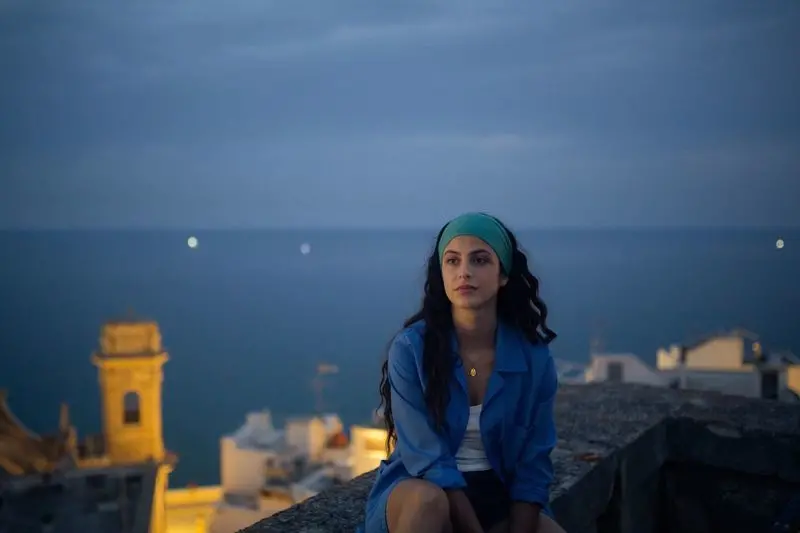

Smita (Mia Maelzer) lives in a village in India, imprisoned by her “untouchable” status. Giulia (Fotinì Peluso) lives in Italy where she runs a laboratory with her father making wigs from real hair. Sarah (Kim Raver) is a lawyer in Montreal who has sacrificed love and dreams for her career.
The three women are the main characters of La treccia, based on the novel written by the director Laetitia Colombani.
There seems to be nothing that link them, but their destinies will inexorably intertwine. Despite never meeting, they share the same courage. For Smita, courage is leaving everything and running away with her daughter in search of a better future; for Giulia, it means trying to everything she can to save the family business from bankruptcy; for Sarah, it is looking into the eyes of the doctor without breaking down at the word cancer. All three must break the chains of tradition and prejudice and travel new paths where there seem to be none; to understand what is really worth fighting for.
The thread that binds Smita, Giulia and Sarah crosses three continents: while distant from a geographical point of view, the humanity of their stories brings them close together.
The central story, which connects the other two, passes through a town in southern Italy. It is the story of Giulia, a young woman with the courage to innovate a business which, consolidated for decades, is now no longer sustainable. Her courage also touches Kamal (Avi Nash), the young Sikh she is in love with, for whom she challenges the prejudices of her family and neighbours.
The town where she lives was created in the town centres of Monopoli and Conversano (province of Bari). The panoramic views, walks on the Tramontana pier, and landscapes overlooking the sea were shot in Monopoli. Conversano offers corners of the ancient city, rooms in the “Maria Marangelli” library, the monumental arch and cloister of the Acquaviva di Aragona Castle, which served as the library entrance and exterior, and the facade of the cathedral, a jewel of Romanesque architecture in Puglia.
The film shows images characteristic of this part of Puglia: crystalline sea, landscapes of red earth dotted with olive trees in silver-green foliage and semi deserted streets lined by protective dry-stone walls.
Smita (Mia Maelzer) lives in a village in India, imprisoned by her “untouchable” status. Giulia (Fotinì Peluso) lives in Italy where she runs a laboratory with her father making wigs from real hair. Sarah (Kim Raver) is a lawyer in Montreal who has sacrificed love and dreams for her career.
The three women are the main characters of La treccia, based on the novel written by the director Laetitia Colombani.
There seems to be nothing that link them, but their destinies will inexorably intertwine. Despite never meeting, they share the same courage. For Smita, courage is leaving everything and running away with her daughter in search of a better future; for Giulia, it means trying to everything she can to save the family business from bankruptcy; for Sarah, it is looking into the eyes of the doctor without breaking down at the word cancer. All three must break the chains of tradition and prejudice and travel new paths where there seem to be none; to understand what is really worth fighting for.
The thread that binds Smita, Giulia and Sarah crosses three continents: while distant from a geographical point of view, the humanity of their stories brings them close together.
The central story, which connects the other two, passes through a town in southern Italy. It is the story of Giulia, a young woman with the courage to innovate a business which, consolidated for decades, is now no longer sustainable. Her courage also touches Kamal (Avi Nash), the young Sikh she is in love with, for whom she challenges the prejudices of her family and neighbours.
The town where she lives was created in the town centres of Monopoli and Conversano (province of Bari). The panoramic views, walks on the Tramontana pier, and landscapes overlooking the sea were shot in Monopoli. Conversano offers corners of the ancient city, rooms in the “Maria Marangelli” library, the monumental arch and cloister of the Acquaviva di Aragona Castle, which served as the library entrance and exterior, and the facade of the cathedral, a jewel of Romanesque architecture in Puglia.
The film shows images characteristic of this part of Puglia: crystalline sea, landscapes of red earth dotted with olive trees in silver-green foliage and semi deserted streets lined by protective dry-stone walls.

Curiosa Films, Moana Films, Indigo Film, SND Groupe M6, France 2 Cinéma, Panache Productions, Forum Films
Three women. Three continents. A single destiny.
India. Smita is an 'untouchable'. She dreams of giving her young daughter an education and is prepared to do anything to make it happen. Smita makes an important decision: to leave everything and go south, in search of a better fate.
Italy. Giulia works in the family-run laboratory that makes wigs with real hair, using "cascatura" from the Sicilian tradition of preserving hair that has been cut or has spontaneously fallen out. When her father has a serious accident, Giulia discovers that the family business is broke.
Canada. Sarah is a successful lawyer. Just as she is about to get an important promotion, she discovers that she has breast cancer.
Bound without knowing it by what is most precious to them, Smita, Giulia and Sarah rebel against the fate assigned to them and decide to fight, unconsciously weaving a network of hope and solidarity.